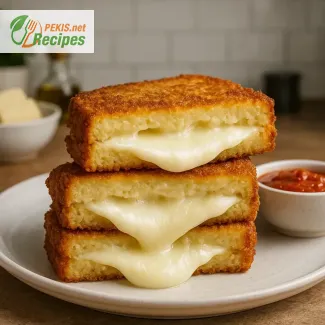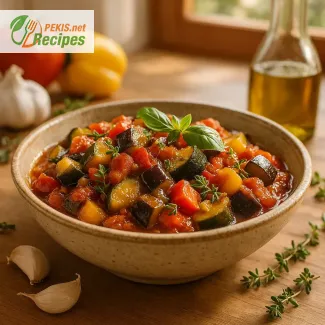
Discover the Heart of Cantonese Cuisine with Dim Sum
The ultimate culinary journey through authentic Chinese small bites
Dim sum represents far more than just a dish — it’s an entire culinary tradition, deeply rooted in Chinese heritage, celebrated across generations and borders. Originally developed as a nourishing accompaniment to tea in ancient Canton, dim sum has evolved into an international symbol of Chinese gastronomy, known for its delicate techniques, artistic presentation, and explosive flavors wrapped in bite-sized parcels. From bustling Hong Kong teahouses to modern metropolitan kitchens, dim sum invites you to experience a symphony of texture, flavor, and tradition.
When one thinks of dim sum, images of steamed dumplings, crispy spring rolls, fluffy buns, and perfectly pleated siu mai flood the imagination. It’s a meal that tells stories — of family, of rituals, of patience, and above all, of the intricate art of balance and variety. This dish isn’t just prepared; it’s crafted, with each morsel showcasing different fillings, wrapping styles, and cooking techniques, ranging from steaming and frying to baking and braising.
A cultural and social ritual served on bamboo trays
To truly understand dim sum, one must also appreciate the context in which it’s enjoyed. Traditionally served in the morning or early afternoon, dim sum is much more than food — it's an occasion known as yum cha, meaning “drink tea.” This communal dining experience revolves around the shared joy of tasting various dishes, sipping fragrant Chinese teas, and engaging in lively conversations. It brings people together, transforming the meal into a cherished social ritual, steeped in meaning.
The beauty of dim sum recipes lies in their regional variety and creative interpretations. In Guangzhou, you might find classic items like har gow — translucent shrimp dumplings with a silky bite — or char siu bao, the pillowy steamed buns filled with sweet and savory BBQ pork. Meanwhile, other regions infuse their own local ingredients and flavors, offering spicy or herbaceous variations that push the boundaries of the traditional format.
An intricate balance of textures, flavors, and craftsmanship
One of the most fascinating aspects of making dim sum at home is learning to appreciate its intricacies. The process of crafting perfect dumplings — from kneading the dough for translucent skins to folding them into neat parcels — is meditative and deeply satisfying. The fillings are no less important: juicy pork, tender shrimp, aromatic ginger, and sesame oil come together to create savory, complex flavors in every bite.
Each recipe requires attention to consistency, timing, and temperature, which all contribute to the perfect outcome. Even the choice of flour or the resting time for dough can affect the texture of your potstickers or buns. And yet, while the method can be elaborate, the reward is worth it — a steaming tray of homemade dim sum, bursting with umami, freshness, and tradition.
Modern accessibility meets timeless tradition
Today, the world is rediscovering dim sum through a modern lens. Whether served in high-end restaurants or recreated in home kitchens, the popularity of dim sum recipes continues to grow. Thanks to the rise of digital platforms and cooking tutorials, more and more home cooks are embracing the challenge of creating authentic Chinese dumplings from scratch.
The appeal of dim sum lies in its versatility: it suits both the casual brunch table and the refined evening gathering. It's gluten-free when made with rice flour wrappers, protein-packed with lean meats or tofu, and endlessly customizable to suit dietary needs and preferences. As a result, dim sum has found a new generation of fans, hungry for heritage yet eager to experiment.
Whether you’re a novice trying your hand at dumpling folding, or a seasoned cook perfecting your Xiao Long Bao, the journey through dim sum is always rewarding. Each dish captures the essence of Chinese cooking philosophy — a harmonious blend of yin and yang, color, flavor, aroma, and nutritional value — beautifully presented in miniature form.
This recipe will guide you through every step of making authentic dim sum, helping you bring the elegance and warmth of Cantonese dining to your home table. From selecting the right ingredients to mastering the techniques behind delicate wrappers and juicy fillings, you’ll discover why dim sum is truly a culinary art form — and why it continues to captivate palates around the globe.
1. Prepare the dough:
Place wheat flour in a large mixing bowl. Slowly pour in boiling water while stirring continuously with chopsticks or a fork. Once the mixture is cool enough to handle, knead it into a smooth dough. Cover and let it rest for 30 minutes. Then knead in the cornstarch until fully incorporated. Let the dough rest again for 10 minutes.
2. Prepare the filling:
In a large bowl, combine ground pork, chopped shrimp, spring onion, garlic, and ginger. Add soy sauce, sesame oil, Shaoxing wine, salt, sugar, and white pepper. Mix well until sticky and thoroughly combined. Cover and refrigerate until ready to use.
3. Form the dumpling wrappers:
Divide the rested dough into four pieces. Roll each into a log and cut into 10 equal pieces. Roll each piece into a ball, then flatten into a 7–8 cm (2.75–3 inch) circle using a rolling pin.
4. Fill and fold the dumplings:
Place 1 heaping teaspoon of filling in the center of each wrapper. Fold the wrapper in half and pleat the edges to seal, pressing tightly to avoid air pockets.
5. Steam the dumplings:
Line a bamboo steamer with cabbage leaves. Arrange the dumplings with space between each. Steam over boiling water for 10–12 minutes until fully cooked and translucent.
6. Serve:
Serve hot with soy sauce, chili oil, or a dipping sauce of your choice.
Elevating Your Dim Sum Experience: Tips for a Modern Culinary Twist
Enhancing tradition with flavor, technique, and health-conscious choices
Crafting dim sum at home is an immersive and rewarding culinary adventure, one that balances tradition with personal creativity. While the classic recipe captures the spirit of Cantonese cuisine, there are countless ways to enhance the dish — both in terms of flavor complexity and nutritional value. By experimenting with ingredients, mastering techniques, and avoiding common missteps, you can take your homemade dim sum from authentic to exceptional.
How ingredient swaps can boost flavor and nutrition
Subtle adjustments in ingredients can dramatically elevate the flavor profile of dim sum. For instance, replacing ground pork with a combination of ground chicken and shiitake mushrooms lightens the dish while deepening its umami character. Mushrooms introduce earthy undertones, while chicken reduces fat content — a perfect solution for those seeking a leaner filling without sacrificing taste.
Adding water chestnuts or finely chopped bamboo shoots can enhance texture with a pleasant crunch, offering contrast to the soft dumpling wrapper. A dash of fish sauce or a spoonful of miso paste can replace or complement soy sauce, bringing in a richer savory depth while supporting digestive health.
Those looking for a plant-based twist can achieve satisfying results by blending tofu, mushrooms, cabbage, and carrots, seasoned with ginger, garlic, and a touch of chili oil for boldness. This vegetarian version is not only healthy but still packed with flavor and satisfying textures.
Why homemade dim sum is superior to store-bought options
There’s no substitute for the taste and texture of freshly steamed, homemade dim sum. Store-bought versions often rely on preservatives, excessive sodium, and frozen fillings that lack the moisture and freshness of hand-prepared ingredients. When you make dim sum at home, you're in control of every element — from the dough's elasticity to the seasoning of the filling.
Homemade dumplings also offer the benefit of customization. You can fine-tune seasoning to your palate, adjust spice levels, or explore regional twists like Sichuan peppercorns for a numbing kick or Thai basil for a fragrant touch. Even the thickness of the wrapper can be tailored: thinner wrappers yield a more refined bite, while thicker ones hold up well to hearty fillings.
Common mistakes to avoid when preparing dim sum
Achieving the perfect dim sum isn’t difficult, but it does require attention to detail. One of the most frequent mistakes is overfilling the dumpling wrapper. Too much filling can cause the dumpling to burst during steaming, resulting in uneven cooking and loss of flavor. A measured teaspoon is ideal for balance and ease of sealing.
Another common error is using cold dough, which tends to be brittle and difficult to shape. Make sure the dough is warm, well-kneaded, and rested before rolling. The wrappers should be evenly thin — thick edges can lead to a chewy bite, which detracts from the dish's elegance.
Undercooked fillings are another pitfall. Even though steaming is a gentle cooking method, it’s crucial that fillings, especially those with meat, reach the correct internal temperature. If you’re unsure, lightly pre-cook the filling before assembling.
Finally, don’t neglect seasoning. Since the wrappers are neutral, the flavor of the filling must be balanced and bold — think a harmony of salt, sweetness, acidity, and umami.
Healthier versions without compromising taste
For those seeking a health-conscious dim sum, consider using whole wheat flour for the wrappers. It provides a slight nuttiness and increases fiber content. Alternatively, rice flour or gluten-free dumpling mixes can be used for those with gluten sensitivities.
Reducing the soy sauce and adding a splash of lime juice or rice vinegar can cut sodium while retaining bright, sharp flavors. Instead of frying or pan-searing, stick to steaming or even baking for a lower-fat preparation.
Incorporating leafy greens, tofu, or legumes into the filling not only improves nutritional balance but also supports sustainable eating habits. Pair these healthier dumplings with homemade dipping sauces made from low-sodium tamari, fresh herbs, and citrus for a refreshing finish.
Texture, presentation, and cultural creativity
One often overlooked way to elevate dim sum is to focus on presentation. Steaming the dumplings on cabbage leaves not only prevents sticking but adds a gentle vegetal aroma. Garnishing with chopped scallions, chili flakes, or even edible flowers can turn a humble dumpling into an artful centerpiece.
For texture contrast, consider creating a crispy base by pan-frying the bottom after steaming, a technique used in potstickers. Alternatively, topping the dumplings with a bit of roe, sesame seeds, or crispy shallots can add another layer of texture and visual appeal.
Incorporating cultural elements also adds a layer of storytelling to your dish. Explore traditional regional fillings — such as lotus paste for sweet dim sum or fermented black bean sauce for a northern twist — to reflect the diversity of dim sum culture across China and beyond.
Maximizing your dim sum recipe’s potential
Enhancing a traditional dim sum recipe is all about creativity, mindfulness, and appreciation for technique. Whether you aim to recreate a Cantonese classic with precision or infuse it with your own culinary signature, the path to improvement lies in the details: the freshness of your ingredients, the way you balance seasoning, and the care with which you assemble each bite.
Dim sum is more than just a meal — it's a ritual, a craft, and a celebration. By exploring new ingredients, adopting healthier methods, and avoiding common pitfalls, you’ll not only improve the final product but also deepen your connection to one of the world’s most beloved culinary traditions.
Allergens present:
Gluten (from wheat flour), Shellfish (shrimp), Soy (soy sauce), Sulfites (Shaoxing wine)
Allergen-free substitutions:
- Use rice flour or gluten-free dumpling flour mix instead of wheat flour to make the dough gluten-free.
- Replace shrimp with chopped mushrooms or tofu for a shellfish-free version.
- Use tamari instead of soy sauce for a soy-free version.
- Skip Shaoxing wine or use dry white wine without sulfites for sulfite-sensitive individuals.
- Vitamin B12: 1.1 µg – Supports nerve function and red blood cell production.
- Iron: 2.6 mg – Vital for oxygen transport in blood.
- Zinc: 3.1 mg – Boosts immune system and wound healing.
- Magnesium: 45 mg – Supports muscle and nerve function.
- Vitamin B6: 0.4 mg – Aids in metabolism and brain health.
- Selenium: 23 µg – Protects cells from oxidative stress.
- Vitamin E: 1.2 mg – Supports immune function and skin health.
- Beta-carotene (from spring onion): 750 µg – Promotes eye health and reduces inflammation.





